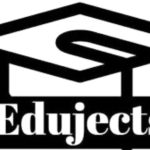In JSS 3, students advance their understanding of Home Economics by learning more complex skills in garment construction, food hygiene, and food management. This lesson plan will cover sewing techniques, the importance of food safety, and how to prepare, package, and market food items responsibly.
Week 1: Revision of Key Concepts
Overview:
The first week will focus on reviewing important concepts from previous terms to ensure students have a solid foundation in Home Economics.
Key Concepts:
- Sewing Basics: A recap of sewing machine operation, basic garment construction, and pattern drafting.
- Food Management: A review of food hygiene, purchasing, and handling.
Activities:
- Quizzes and group discussions to review garment construction and food safety practices.
- Practical demonstration to refresh sewing and food management skills.
Evaluation Questions:
- What are the key stages in constructing a garment?
- How do food safety practices prevent contamination?
Week 2 & 3: Sewing Machine and Garment Construction Processes
Overview:
These weeks will focus on advancing students’ skills in using the sewing machine and understanding the full process of garment construction.
Key Concepts:
- Sewing Machine Operation: Understanding how to properly use a sewing machine, including threading, stitching, and maintenance.
- Garment Construction Processes: The steps involved in transforming fabric into a finished garment, such as cutting, sewing, and finishing.
Example:
Students will practice using the sewing machine to make a simple garment, such as a skirt or blouse, from a pre-drafted pattern. They’ll learn about different types of stitches and finishing techniques to ensure the garment is well-constructed.
Activities:
- Demonstrations on how to use a sewing machine effectively.
- Students will practice stitching and sewing basic garments, paying attention to seam finishing, hemming, and adding buttons or zippers.
- Practical assignment to create a garment by following specific construction processes.
Evaluation Questions:
- How do you operate a sewing machine correctly and safely?
- What are the key steps involved in garment construction from start to finish?
- Explain the importance of using the right stitches for different types of fabrics.
Week 4 & 5: Food Hygiene and Safety
Overview:
These lessons will dive into the critical areas of food hygiene and safety, helping students understand the importance of keeping food clean and safe for consumption.
Key Concepts:
- Personal Hygiene: The importance of washing hands, wearing clean clothing, and avoiding contamination during food preparation.
- Kitchen Hygiene: Ensuring the kitchen environment remains clean, including proper cleaning of surfaces, utensils, and equipment.
- Food Safety Practices: Understanding foodborne illnesses, proper cooking temperatures, and safe storage of food.
Example:
Students will observe proper hygiene while preparing a simple meal, ensuring they follow the correct steps to avoid contamination. They will also learn how to store food safely to avoid spoilage.
Activities:
- Hands-on demonstration of washing hands, cleaning utensils, and ensuring food is stored at the correct temperature.
- Group discussions on foodborne illnesses and how to prevent them.
- Practical exercises on maintaining kitchen hygiene during food preparation.
Evaluation Questions:
- What are the proper hygiene practices to follow when handling food?
- Why is it important to store food at the correct temperature?
- How can improper food handling lead to foodborne illnesses?
Week 6 & 7: Preparation, Packaging, and Marketing of Food Items
Overview:
In these lessons, students will learn how to prepare, package, and market food products. They will understand the commercial aspects of food production, including packaging techniques and marketing strategies.
Key Concepts:
- Food Preparation: The techniques and skills involved in preparing food for sale or consumption.
- Packaging: Understanding different methods of packaging food to maintain freshness and appeal.
- Food Marketing: Exploring how food items are marketed and sold, including labeling, advertising, and customer engagement.
Example:
Students will work on preparing a food item, such as cookies or a snack, and then package it attractively for sale. They will learn about labeling, including ingredient lists, expiration dates, and marketing through labels.
Activities:
- Students will practice preparing a simple food product (e.g., cookies or snack bars).
- Each group will work on designing packaging for their food product, focusing on both functionality and attractiveness.
- Discussion on food marketing strategies, including how to attract customers and promote food items.
Evaluation Questions:
- What are the key steps in preparing food for sale?
- How can packaging impact the shelf life and appeal of food products?
- What are the key elements to include on a food product label?
Week 8: Responsible Food Management
Overview:
This week will focus on the concept of responsible food management, emphasizing how to manage food resources effectively while minimizing waste.
Key Concepts:
- Food Budgeting: How to plan meals and purchase food within a budget.
- Minimizing Food Waste: Techniques for reducing food waste through careful planning, preservation, and portion control.
- Sustainable Food Practices: The importance of sustainability in food production, purchasing, and consumption.
Example:
Students will learn how to create a meal plan for a week, ensuring they stick to a budget while using seasonal ingredients to reduce waste. They will also explore ways to repurpose leftovers.
Activities:
- Students will work in groups to create a weekly meal plan based on a set budget.
- Practical lessons on preserving food to avoid waste and ensuring that food purchases are used efficiently.
- Class discussion on sustainable and eco-friendly food practices.
Evaluation Questions:
- What are the benefits of food budgeting, and how can it help minimize waste?
- How can sustainable food practices help the environment?
- Why is it important to reduce food waste in homes and communities?
Conclusion
The lessons in JSS 3 Home Economics will provide students with valuable skills in garment construction, food hygiene, and responsible food management. These skills will not only help them in their daily lives but also offer potential career paths in fashion design, food processing, and management.

